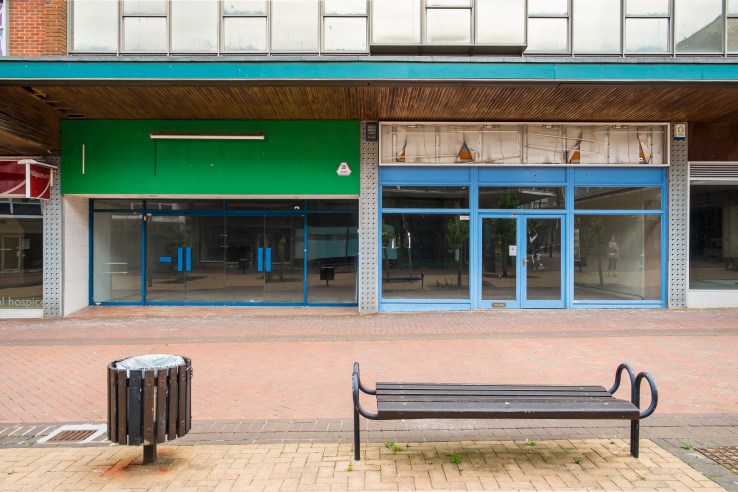
culled from:http://techcrunch.com
It’s a tough time to be an old-school retail company.
This past summer, I was walking around Chicago with a realtor. We were looking for popup spaces in Lincoln Park for Ministry of Supply, and she pointed out an American Apparel. “They’re not doing well,” she whispered. “That space may become available.” Six months later, Warby Parker moved in.
American Apparel isn’t alone. Sears/Kmart is shutting down 200 stores. In the company’s blog, CEO Edward Lampert points out: “With more and more of our sales and member engagement happening online or via mobile and shipping straight to home, do we need the same kinds of stock rooms and warehouses?”
Target is closing 19 stores this year — the same number that it opened last year.
Abercrombie and Fitch announced that it’ll close 180 stores by 2015. As retail analyst Wendy Liebmann summed it up, Abercrombie and Fitch “feels like it’s grounded in an era that’s at least ten years old. I don’t think shoppers…have totally walked away. But, as a whole, I think shoppers have moved on.”
Meanwhile, retail startups are opening stores in droves. Bonobos has said it will open 30 stores in the next two years. Warby Parker has opened 13 stores and showrooms since 2013 and has been vocal about their plan to open more. Rent the Runway has opened four stores in the past year, and, Birchbox has recently announced the opening of its Soho flagship.
In short, e-commerce companies are bullish on retail, and they’re executing extremely well in this new channel. For many of them, we’re learning something that we may not have quite expected from the onset: retail is a great driver of sales and profitability.
E-commerce companies are tapping into flexible and unique spaces
To give you some context, the average Gap store signs a 10-15-year lease for 9,000 square feet — and the average Ministry of Supply store signs a six-month lease for 1,000 square feet. Obviously, these spaces wouldn’t make sense for Gap: They have thousands of products, ample resources, and no reason to spend money on a store that would close six months later.
The fact that startups are able to do this, though, presents a huge opportunity. Vacant storefronts, a greater willingness among landlords to do short-term leases, and rental sites like The Storefront are all making it easier for e-commerce startups to enter the retail environment, quickly learn what does and doesn’t work, and then build upon those cheap, low-risk learnings.
Bonobos, which has opened up guideshops around the country, is another e-commerce company that is able to work towards retail profitability quicker than peers, given the smaller retail space they need. Because Bonobos carries limited inventory and encourages shoppers to buy online, their average guideshop is around 1,200 square feet, giving them substantial savings on rent.
E-commerce companies have centralized inventory and retail decreases shipping
In retail, inventory can be a dirty word, evoking thoughts of tied-up cash. But because these e-commerce companies are born on the web, they’re able to merge their online and offline inventories for distribution. This allows Ministry of Supply, for example, to fulfill online orders from retail stores much more easily; and if we don’t have a product in our stores, we can ship directly to the customer. Both instances decrease the need to split inventory, enabling e-commerce like us to operate on a leaner scale.
Then there’s shipping. For many e-commerce startups, free shipping both ways is a given. Warby Parker, for example, ships up to five pairs of frames to customers both ways for their try at home program. For them, the offline retail model substantially decreases shipping costs, as well as the costs of returns and exchanges.
E-commerce companies have a tight understanding of their customers
As we saw with JC Penny, trying to re-condition customers isn’t an immediate win – even if it’s coming from a former Apple exec. While old-school retailers are often many steps away from the customer, e-commerce startups know their customer: who he or she is, what they like, where they shop, and how they shop. Often working within open offices, a startup’s customer experience team is often just a few seats – not floors – away from the retail team.
What does this mean for retail? A lot. It means being able to design store experiences that speak to our customers. It means opening stores in the right city, in the right neighborhood and on the right street. And it means curating experiences in the retail environment that appeal to target customers. Getting all of these factors right increases the “halo effect” of retail, drives up sales and increases word of mouth.
For an average retail store, a payback period of two years or less is average. However, for e-commerce companies, this time can be driven down substantially through flexible (and cheaper) leases, centralized inventory, and, deep understanding of the customer. In addition, the decreased shipping affects the e-commerce bottom line.
In addition to cost savings, there are also the top line drivers: the opportunity to build deeper advocates in person, the marketing that comes along with a storefront and the “halo” effects of retail. All of these factors are hugely beneficial to e-commerce companies as they continue to scale both online and offline.
It’s not a new story. In every industry, the old are slow to act. Startups come in, innovate and move faster – and customers’ standards evolve. In retail, the old guard is clunky and slow-moving and has millions of dollars tied up in inefficient stores: huge retail locations, 10+ year leases, costly inventory, and experiences that, frankly, suck.
While they’re moving out, e-commerce companies are moving in.
 RSS Feed
RSS Feed Twitter
Twitter

 08:51
08:51
 Executive Republic
Executive Republic
 Posted in
Posted in
0 comments:
Post a Comment